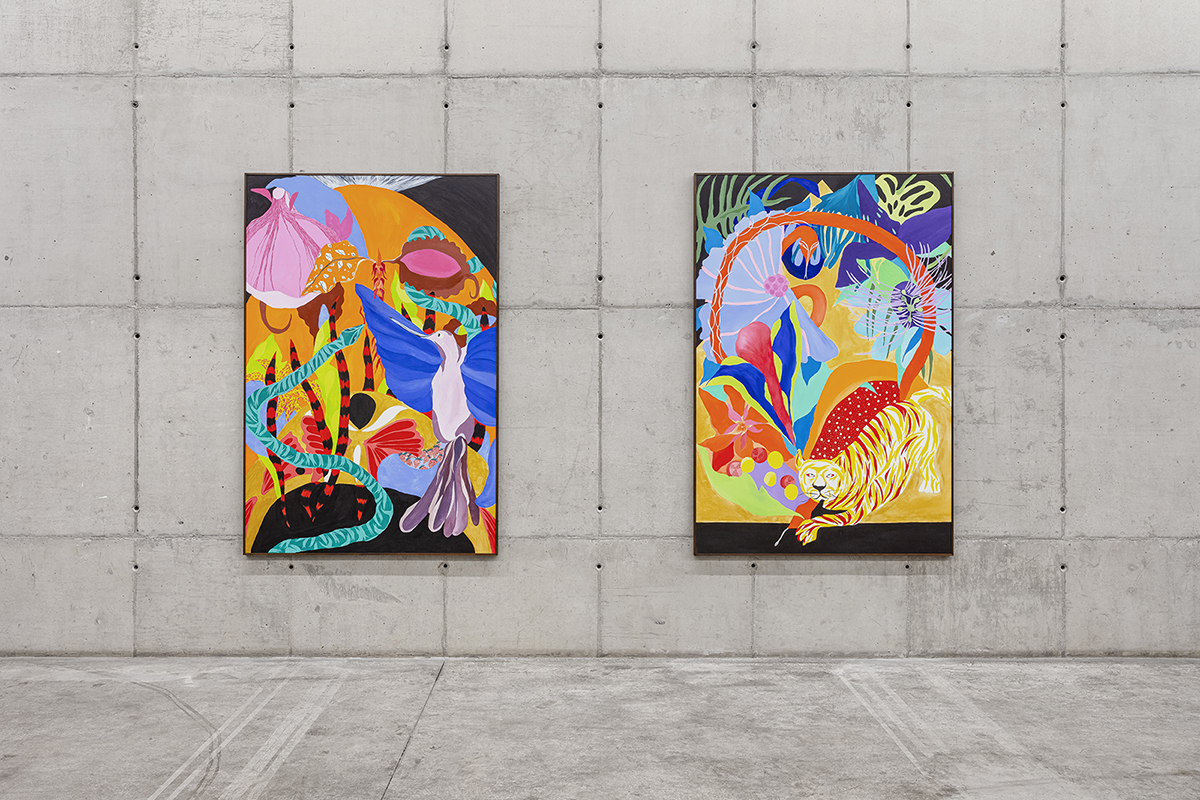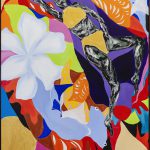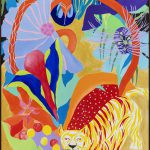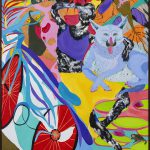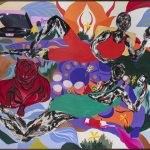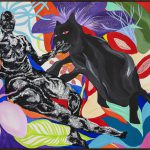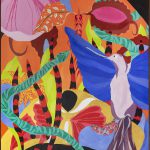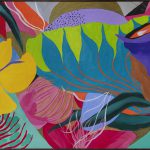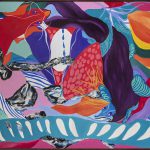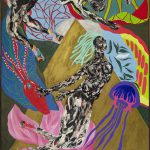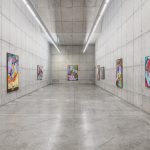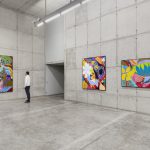OUVINDO O QUE SE É PARA SER E ESTAR PRESENTE NAS CORES DA VIDA | HELOISA HARIADNE
by Carollina Lauriano
In 1989, during the peak of the most recent civil conflict in Peru, the collective theatre group Yuyachikani rehearsed their piece Contraelviento, a narrative that re-tells the testimony of an indigenous woman who survived the Socos massacre in 1983. In Quechua, the term Yuyachikani defines the knowledge of one’s memory and body, breaking the boundaries between those who think and those who are thought.
“I am thinking”, “I am remembering”, and “I am your thought” are three loose translations for the term, which mutually establish the relationships of subjective differentiation between the I and the other, so that each of these subjects is formed from social/political/economic contexts, historical traumas and experiences that they are or were inserted into. Therefore, we can begin to trace the parallels between the memories of the body and the historical inscriptions that have started to outline the systems of organisation of the world’s logic of functioning, which actually, many times, inhibits the individualised comprehension of the world subjectivities.
In Heloisa Hariadne’s first solo show at Galeria Leme, Ouvindo o que se é para ser e estar presente nas cores da vida [Listening to what there is and being present to the colours of life], the artist works the concept of memory-body in the context of the word Yuyachikani. Her paintings start from an investigation into the memories Hariadne’s own body carries. In this intimate portrayal of her interests – that pass through a desire to rethink the connection between humans and nature, conscious eating habits, biology, ancestry and the revival of knowledge from native peoples – Hariadne creates narratives of a poetic self that are looking to build spaces from freedom despite preestablished notions. Her paintings evoke a cosmic and philosophical relation to a spiralled temporality, of which the movements expressed by the artist always suggest that to reach the future, it is necessary to rescue something prior to our own existence.
In the show, the works are mediated by the presence of the human figure or lack thereof; her works create crossroads between the profusion of colours and an intense repetition of elements. This decision-making reflects upon the unfeasibility of diverse performative practices that were -and still are- neglected by historical records. Here, the body assumes, consciously, a subjective role in the elaboration of memory that keeps within itself gestures, oratories, traumatic recordings, performances and repertoires. Nevertheless, in the human figure, gestures come into evidence to confirm her expressive character, in which texture is employed to accentuate a materiality that brings to form its own identity full of complexities and ambiguities.
From these perceptions, Hariadne creates upon her own body these inscribed narratives that search for a place of rupture on the limits of the norm. In giving intentional and choreographed movement to the poetic elements in her paintings, the artist suggests that the story must be in a perennial transformation process, questioning the necessity for a regenerative harmony between body, memory, ancestry, nature and the established world. In facing her own memories in such a poetic way, she works intimately with the emotional side of her body to question it and the spaces around it. In this way, Heloisa Hariadne enacts the memory of her body so that it can never be forgotten.
